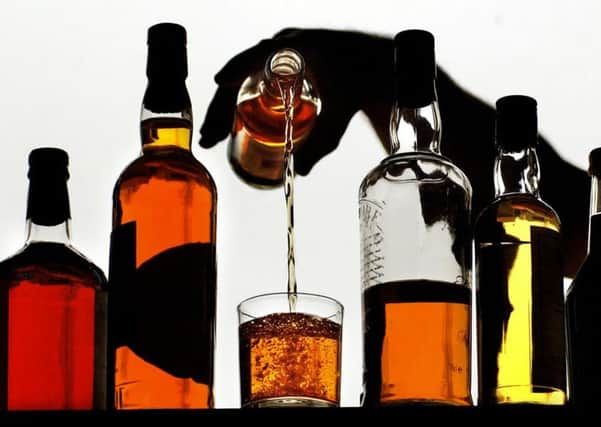The man who could turn whisky into medicine
This article contains affiliate links. We may earn a small commission on items purchased through this article, but that does not affect our editorial judgement.


Malcolm Barraclough, director of natural science company Brathadair, has been working with Aberdeen Univeristy to develop a process to put pot ale, a chemical-rich by-product of the whisky industry, to new use.
The disposal of pot ale has been an age old challenge for distillers, not least because of the huge amounts of the effluent created by whisky production.
Advertisement
Hide AdAdvertisement
Hide AdFor every litre of whisky on supermarket shelves, around 8.5 litres of pot ale is produced in the first stage of distillation alone.


Much of it is sold as low grade agricultural fertiliser with its use monitored by Scottish Environment Protection Agency (SEPA) given the potential risk to watercourses, fish and invertebrates.
Now Mr Barraclough wants to extract and reuse the chemicals - with the ability to make medicine from the waste water just one possibility.
While it is anticipated some chemicals could be used by the paint and food industries it is also hoped that one - butyric acid - could be readily transformed into a treatment for Crohn’s Disease.


Mr Barraclough said: “The problem of dealing with waste from whisky production is as old as the industry itself.
“What Brathadair is trying to do is turn the whole thing on its head and rather seeing pot ale as a waste which needs to be disposed of, it should be seen as a source of valuable raw materials.
“Early work with the University of Aberdeen has demonstrated that it should be possible harness these by-products and convert them into a series of five core chemicals from which further value added chemicals can be constructed.
“One possibility is to convert one of the extracted chemicals into a compound that has proved useful in the treatment of Crohn’s Disease.
Advertisement
Hide AdAdvertisement
Hide Ad“Really we are at the crucial stage where we need to transfer knowledge into practical reality. It is a bit of a white knuckle ride at the moment.”
Mr Barraclough, whose company is registered in Edinburgh, received £40,000 from the Small Business Research Initiative and Highlands and Islands Enterprise to fund the research at Aberdeen University.
Early stage discussions are also underway with potential investors and Zero Waste Scotland to develop the technology to realise the project on an industrial scale.
While Scotland’s largest distilleries have invested millions into the treatment and disposal of waste products, Mr Barraclough said smaller drinks enterprises would benefit from the technology he is developing.
Around 50-60 per cent of SME distillers contract with a third party who normally arrange to spread the pot ale on farm land to improve crop yields.
Mr Barraclough added: “The challenge is now to begin to scale up the process, work with distillers to harness their waste streams and find economic ways convert the pot ale into useful products.”
A spokesman for SEPA said those wanting to use pot ale on farmland had to demonstrate how spreading operations would avoid pollution to watercourses.
He added: “Given the high nutrient levels within Pot Ale, a direct spill into a watercourse can effectively strip out the oxygen from the water and adversely impact on fish and invertebrates. Pot ale will also contain copper, so any application to land has to be reviewed from time to time to ensure copper levels don’t exceed safe limits.”
Advertisement
Hide AdAdvertisement
Hide AdLast month, the Scotch Whisky Association refreshed its environmental commitments with a pledge to continue to make beneficial use of the industry’s by-products.
It said it would also work to insure that products and materials used in distilling are recovered and regenerated at the end of their life.
DOWNLOAD THE SCOTSMAN APP ON ITUNES OR GOOGLE PLAY
